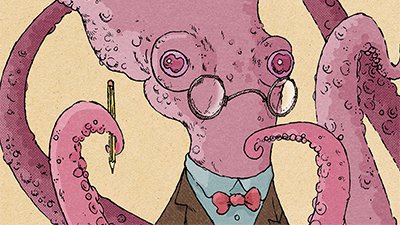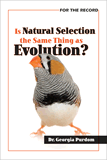Is Sexual Selection the Origin of Beauty?
We’ve long known that finches (specifically Darwin’s finches on the Galapagos islands) have different-sized beaks due to natural selection (and other factors). For example, as the food choices change due to environmental factors, birds that are better suited to eat whatever is available thrive and therefore generate more offspring who are like themselves. Natural selection helps a species adapt to a changing environment. It’s a very wise design feature, but there’s more going on than just natural selection.
Sexual selection is the process by which the traits that affect mate choice shape the genetics of the species. Instead of the environment shaping the species, as with natural selection, the preferences of a mate drive the changes within a species.
A recent study looked at nine species of finch-like South American birds, called southern capuchino seedeaters. The researchers sequenced the genomes for each species and compared them. They discovered that the DNA differs very little between species (a variation ranging from .03% to .3%) and that each species has variation in the same area, in the place where the DNA appears to have a role in coding for and regulating the genes for the pigment melanin.
Within these nine species of southern capuchino seedeaters, the females are virtually identical while the males differ widely in their color and song patterns. The researchers noted that this difference in coloration and song doesn’t seem to give the males any survival advantage since all nine species eat the same food and live in the same basic environment. Yet the males of the species differ widely from one another. Why? Well, it appears that female mating choices have brought about these changes. In other words, it’s sexual selection happening here.
Origin of Beauty?
A recent article in The New York Times features the research of Richard O. Prum, a Yale ornithologist (bird scientist) and evolutionary biologist. Prum has published a book on his views on the evolutionary origin of beauty. The origin of beauty has long been a problem for evolutionists, and Charles Darwin himself struggled to explain it.1 Well, Prum has resurrected Darwin’s views on the topic and appeals to sexual selection to explain beauty.
The origin of beauty has long been a problem for evolutionists, and Charles Darwin himself struggled to explain it.
According to this article, Prum argues that beauty exists in the animal kingdom because that’s what females like. He argues that females don’t just select a mate on the basis of health and fitness; they perceive a kind of beauty when they are choosing a mate. He answers the question “why are birds beautiful” with the controversial answer “birds are beautiful because they’re beautiful to themselves.” Prum’s views on beauty are minority views within the scientific community.
Beauty: A Gracious Gift from the Creator
Does this explain the origin of beauty? Well, it might help us understand differences within a species, though future research is needed, but it doesn’t explain the origin of beauty. Beauty isn’t just found within a species—beauty is throughout creation (though it is marred by the Curse) from the micro to the macro.
For example, beauty isn’t just found on the wings of a butterfly, the tail of a bird, or the unique pattern of each snowflake. It’s also found in the way that the colors of wildflowers blend beautifully in a meadow. It’s seen in the loveliness of a pristine beach dotted with shells, turquoise water lapping at the shore. It can be found in the flash of colored fish swimming over a bright reef wrapped in sunlight sparkling through the water. Beauty is everywhere we look.
Sexual selection can’t explain why the rainforest looks as if the whole thing fits together, with each piece adding its own tone, color, shade, and unique beauty to the image. And it can’t explain how humans can perceive beauty. While other creatures may (if this research is correct) be able to see a kind of beauty in their own species, you don’t see a finch stopping to gaze at a sunset or appreciate the way the sky reflects off the lake. Humans alone can perceive and revel in the beauty all around us.
Beauty is not the result of evolutionary processes. It’s a gracious gift from our Creator. And, even though this creation is marred because of sin, we should stop and give glory to the One who created all of this for us to enjoy.
Footnotes
- Stuart Burgess, “The Beauty of the Peacock Tail and the Problems with the Theory of Sexual Selection,” Answers in Genesis, August 1, 2001, https://answersingenesis.org/natural-selection/peacock-tail-beauty-and-problems-theory-of-sexual-selection/.
Recommended Resources

Answers in Genesis is an apologetics ministry, dedicated to helping Christians defend their faith and proclaim the good news of Jesus Christ.
- Customer Service 800.778.3390
- © 2024 Answers in Genesis






